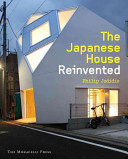2018 School Spending Survey Report
The Japanese House Reinvented
Monacelli. 2015. 304p. illus. ISBN 9781580934060. $60. ARCH
COPY ISBN
VERDICT Anyone with an interest in the future of houses or a yen to see the Japanese at their acme will enjoy this well-illustrated tour.
RELATED
ALREADY A SUBSCRIBER? LOG IN
We are currently offering this content for free. Sign up now to activate your personal profile, where you can save articles for future viewing




Comment Policy:
Comment should not be empty !!!